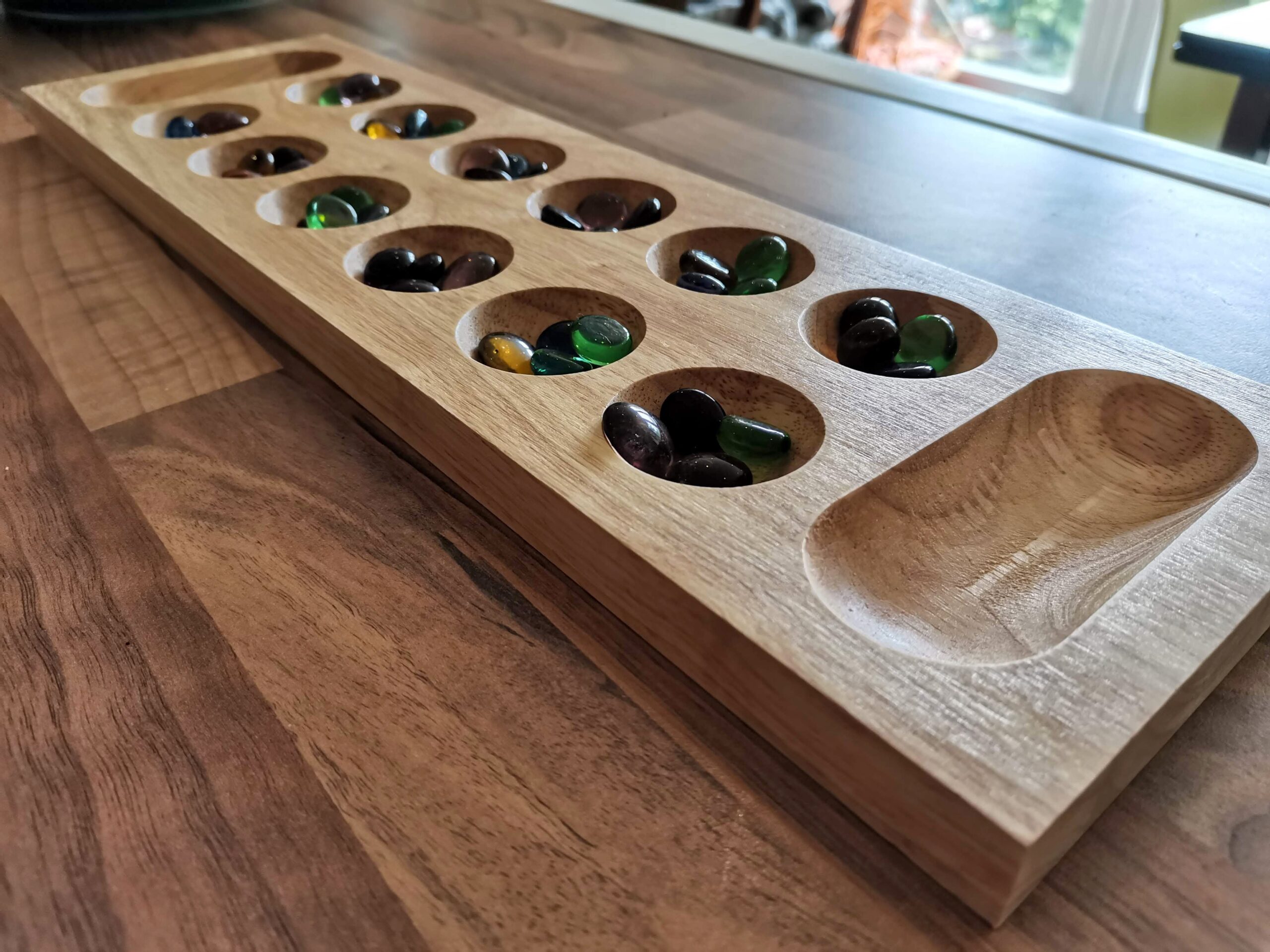El Grande Review
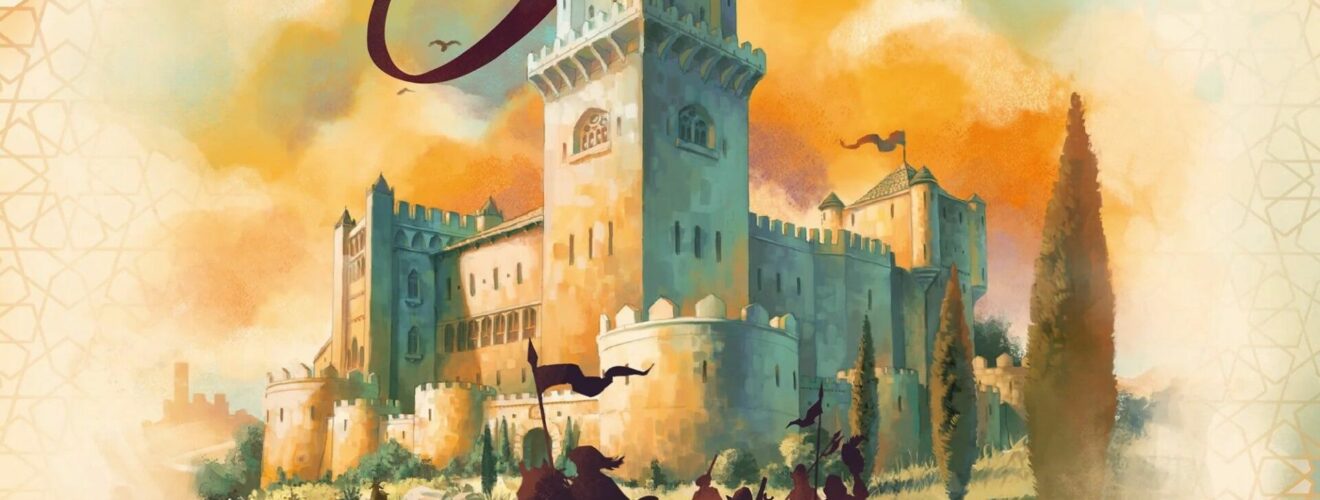
As if I wasn’t behind the hotness enough when I previously reviewed 2007’s Hamburgum (read that one here), this time I’m taking us back 30 years into the past. In 1995 Wolfgang Kramer and Richard Ulrich birthed El Grande into the world, and the world’s been a better place ever since. Competition over Spain’s regions has never been such fun, and the recent decision by Hans Im Glück to print it again for a whole new generation was more than enough to push me over the edge and convince me to buy my own copy.
Que?
El Grande is an area control game. The board is a map of Spain which is split into nine regions. During each of the game’s three scoring phases, the player with the majority of pieces in each area scores points based on the scoring marker in the area. Nice and easy so far. Each player has a Court area in front of them with their available Caballeros (cubes in the original, meeples in the new print), and a shared Province area holds all the reserve Caballeros for all players.
On your turn, you play a power card. The cards are numbered 1-13, most of which have a number of meeples printed on them. The lower the card value, the more meeples. In each round there are five action cards on offer, four of which change every round, while the remaining card which lets you move the king is available in every round. The meeples on your power card determine how many you add to your court from the province, and the meeples printed on the action card you pick tell you how many you can play onto the map on your turn. What makes it so interesting is that no one can play the same value as a previously played card in that round, and that each card can only ever be played once.
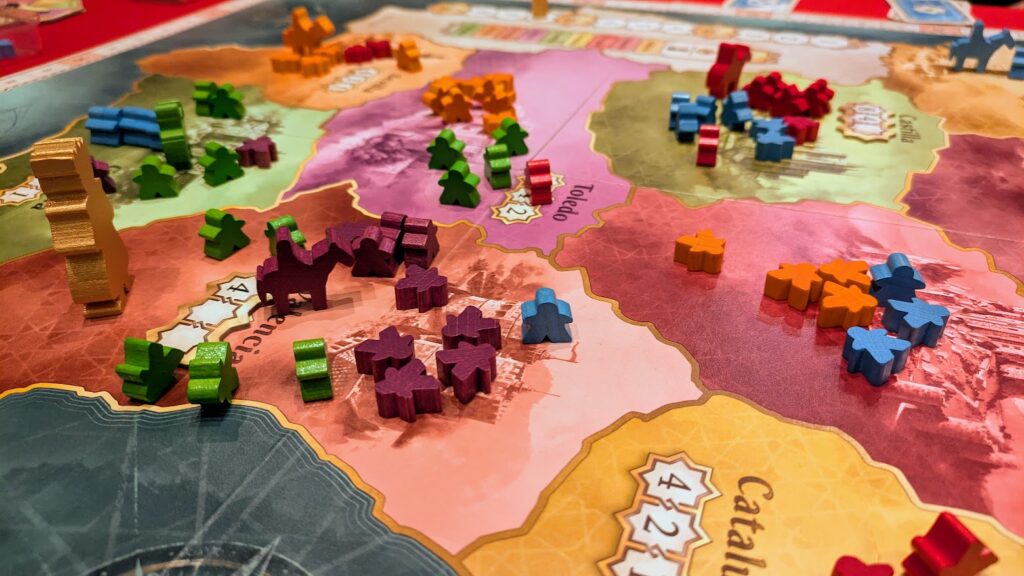
90% of what makes El Grande so much fun is summed up in that paragraph above. You see, if you play a higher value power card, you get to pick first from the action cards for that round, at the expense of not adding many meeples to your court to actually play to the board. You can play low value cards to get lots of meeples, but you’re likely to be left with whatever action hasn’t already been claimed. The action cards have the ability to really mess things up, so having first choice is great, but at the same time you want to have the meeples to put down, so what do you do? High value card, low value, or somewhere in the middle and hope for the best?
You only have to make that decision nine times in the entire game, but it’s agonising every time, and it’s incredibly enjoyable. A big piece representing the king stands in one of the regions and it has a big influence. You can only place meeples in areas adjacent to the king, and you can’t affect the king’s area at all, so having him stood in a region you’re going to score big in is a huge benefit. This is especially true when you realise that the action cards let you do things like remove other players’ pieces from the board, move any meeples wherever you like, add scoring tiles to regions which either boost or degrade their scoring, or even score regions between scoring rounds.
Castillo
It’s impossible to ignore the cardboard castle – or castillo – standing in one corner of the board. It’s the cherry on top of this delicious cake of a game in my opinion. Whenever you place or move pieces, instead of adding them to the board you can toss them into the castillo, out of sight, but never out of mind. At the start of each scoring round the castillo’s doors open, the meeples within come tumbling out, and it’s scored like a little region of its own. But wait! All players now move those newly freed caballeros to regions of their choice, affecting the majorities just before they get scored.
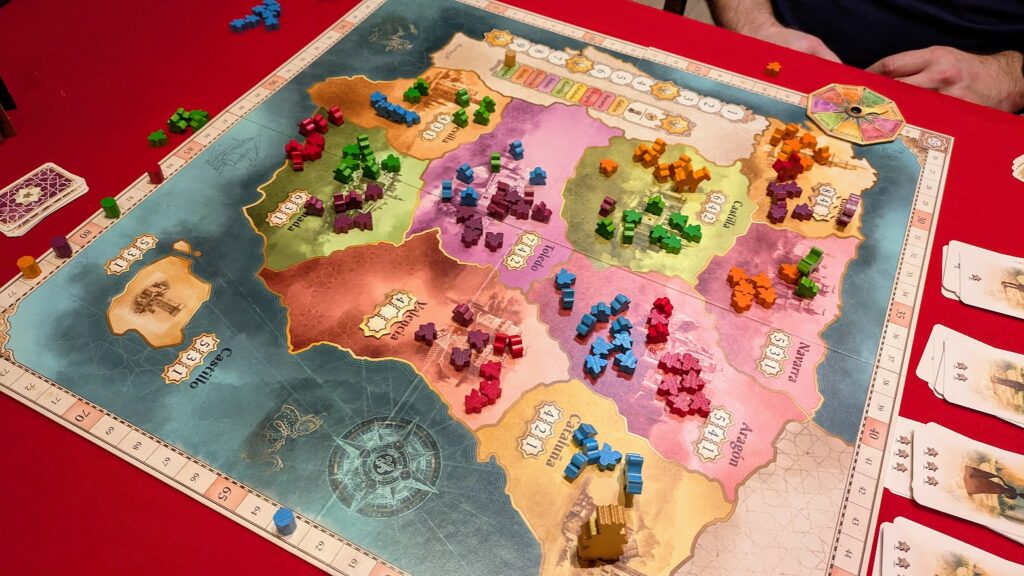
The genius little twist added here sees players analyse and compute consequences at light speed, resulting in groans and cheers. Before you open the castillo, each player chooses one of the game’s regions in secret on a little dial. Do you dare choose that one region nobody is in, hoping nobody else does the same? Or do you add them to the highest-scoring region to try and pip the others to the post? What if they do the same?? Can you remember how many they put in it? Can you remember how many you put in it?
As the game progresses control swings like a pendulum. The player in the lead at any given time has a huge target on their back, and in my experience, the table turns into a gathering of Grima Wormtongues from Lord of the Rings. Everyone trying to influence the other players to hobble another player, but never for their own benefit of course. No, they’d never do that. They just want to help you, friend.
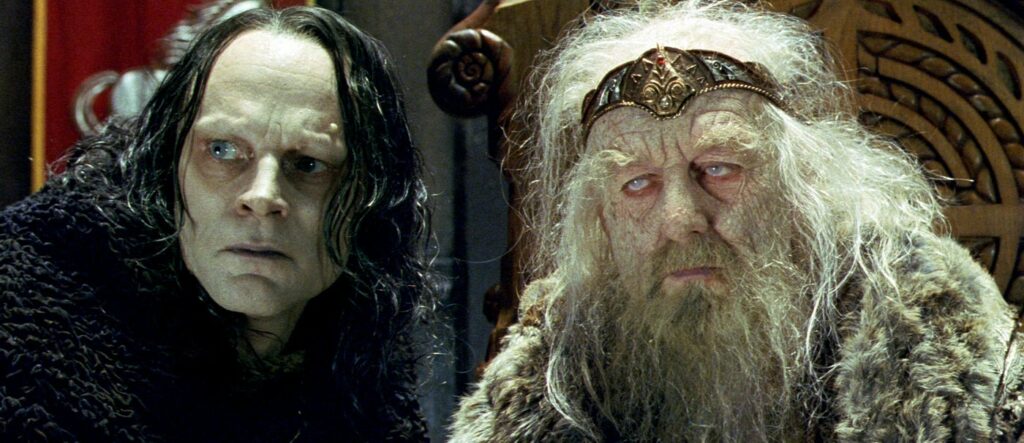
Ebb and flow, thinking on your feet
The biggest difference between El Grande and many area-control games is the level of strategy involved. Long-term planning in El Grande is difficult. It’s a game of tactics and pivoting in an instant. The action cards push the game along in an unpredictable manner, like pushing a shopping trolley over cobbles. You have an idea of where you want to get to, but there is so much that’s going to happen to you before you get there. Holding on to that 7-point Toledo is great until someone puts the 4-point scoring tile on it. Having a majority of one meeple in a region goes up in smoke because someone gets to the card which lets them move two of yours to another region.
Similarly, there are plenty of options to sneak points and creep around the scoring track. Players often concentrate on the 6- and 7-point regions, but cards come out of the deck which score the 5-point regions instantly. You’ll see chances to add a single meeple to multiple regions in one turn and claim uncontested second places there, mopping up another ten or more points that others didn’t notice. You really need your head a swivel and have to be able to react to what’s going on very quickly.
Some people won’t enjoy that at all. Strategists who are in it to play the long game can quickly find they aren’t having a good time. The wild swinging and the fact that other players can just force you to ditch loads of your meeples from the board or your court is like a poke in the eye to some folk. In my personal experience this is a small minority of players, but it’s something to bear in mind if you know your group well. I’m editing this existing review draft off the back of a weekend convention where I taught the game to eight new players, and only one of them didn’t have a great time. That’s pretty good going as far as I’m concerned.
Final thoughts
I’ve loved El Grande from the first time I played it. It’s a classic for a reason, and this reprint just makes it better in my opinion. The board art is prettier, and while some people might mourn the loss of the old score tile design with its pips, the numbers are more readable. Meeples instead of cubes is good, the Grande piece now looks like someone on horseback instead of a bigger cube, and the king is golden and has a crown. It’s a really nice edition with the kind of care and attention to detail it deserves.
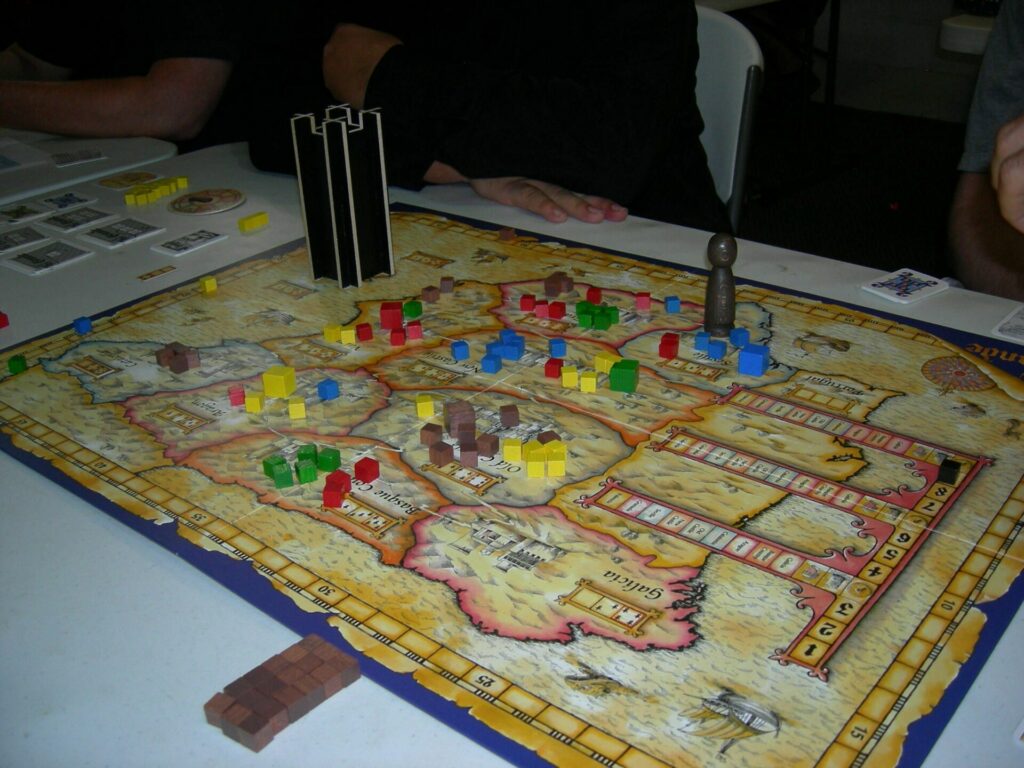
The game itself is essentially the same as it’s always been. Choosing a card and playing it, before putting some little wooden dudes on a board isn’t too taxing, but the decision space in such a simple turn is huge. Aside from what I mentioned above and trying to decide between adding more meeples to your court and turn order, there’s the first player marker. The player who plays the lowest value card each round gets the first player marker for the next, which can be huge. Even when you don’t want to move the king, moving it just to stick it in the corner of the map and limit where the other players can place pieces. There are just so many little needles to stick into the other players.
The level of balance is great. Even in your first play of the game, you’ll get a sense of belief that you can compete with people who’ve played before. It’s a belief that’s justified. You really can compete. El Grande is a game about playing the other players around the table, not wrestling with rules and unknown edge cases. What you see is what you get, and if you can read the other person’s thoughts, you can get one over on them. El Grande is amazing. It’s still amazing, even after all this time. No other game has managed to topple it when it comes to doing what it does. It’s best played with four or five players, but if you regularly have that many people around a table, it’s a must. A masterpiece of a game which deserves a place in your collection.
You can buy El Grande from my retail partner, Kienda, right here. Remember to sign up at kienda.co.uk/punchboard for 5% off your first order of £60 or more.
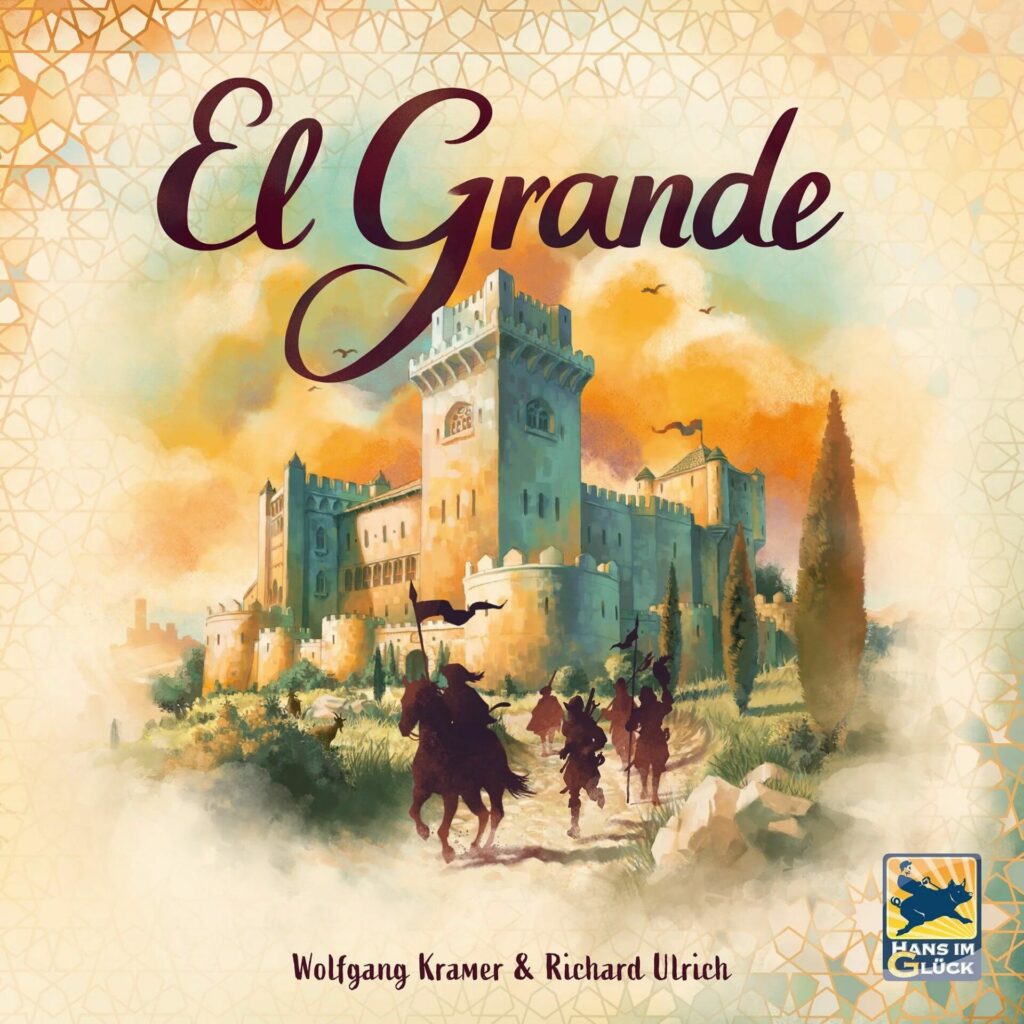
El Grande (1995)
Design: Wolfgang Kamer, Richard Ulrich
Publisher: Hans Im Gluck
Art: Doris Matthäus, Stefan Sonnberger, Franz-Georg Stämmele
Players: 2-5
Playing time: 60-120 mins









